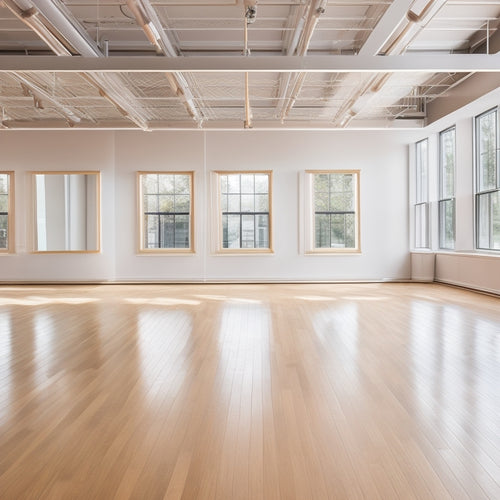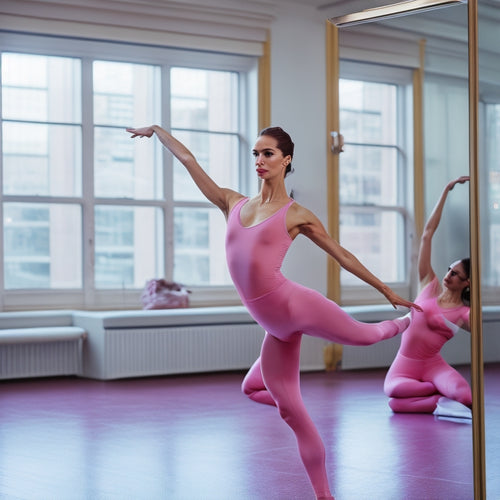
Enhance Education: Dance Boosts Pattern Recognition Skills
Share
Dance has been found to have a profound impact on cognitive abilities, particularly in the area of pattern recognition, which is a fundamental skill essential for educational success. By integrating dance into the curriculum, educators can create an engaging learning environment that fosters creativity, self-expression, and student engagement. As dance enhances spatial awareness, problem-solving skills, and memory retention, it can greatly boost pattern recognition skills, leading to improved academic performance. In addition, dance's rhythmic patterns can stimulate the brain, facilitating critical thinking and math development. As we explore the intersection of dance and education, the possibilities for enhanced learning become increasingly evident.
Key Takeaways
• Dance enhances pattern recognition skills by stimulating cognitive functions, particularly memory retention and spatial awareness.
• Pattern recognition is fundamental for educational success, facilitating critical thinking, problem-solving, and math skills development.
• Integrating dance in the curriculum creates an engaging learning environment, fostering creativity, self-expression, and interdisciplinary learning.
• Dance boosts cognitive development by building new neural connections, strengthening cognitive pathways, and enhancing problem-solving skills.
• By incorporating dance, educators can promote a holistic approach to education, supporting diverse student needs and stimulating a rich learning environment.
Dance Enhances Cognitive Abilities
As the human brain is wired to respond to rhythmic patterns, dance has been found to greatly enhance cognitive abilities, including memory retention, problem-solving skills, and spatial awareness, ultimately leading to improved overall brain function.
Through dance, cognitive development is accelerated, and memory improvement is a significant byproduct. This is because dance requires the coordination of multiple cognitive functions, such as attention, perception, and motor control. As dancers process and execute complex movements, their brains build new neural connections, strengthening cognitive pathways. This, in turn, enhances problem-solving skills, spatial awareness, and memory retention.
Pattern Recognition in Education
Pattern recognition, a fundamental cognitive skill, lies at the heart of educational success, playing an essential role in facilitating learning and understanding across various subject areas. It is the foundation upon which critical thinking, problem-solving, and analytical skills are built.
In math, pattern recognition is vital for developing math skills, as it enables students to identify relationships between numbers and shapes. Additionally, evolutionary research relies heavily on pattern recognition skills to identify variations in species evolution.
Integrating Dance in Curriculum
By incorporating dance into the educational curriculum, educators can create a more essential and engaging learning environment that fosters creativity, self-expression, and interdisciplinary learning. This approach acknowledges that students learn in diverse ways, and dance can cater to various learning styles.
By integrating dance, educators can promote student engagement, encouraging active participation and motivation. Interdisciplinary learning is also facilitated, as dance can be linked to subjects like math, language, and science.
A holistic approach to education is crucial, and dance can play a pivotal role in achieving this goal. By embracing dance in the curriculum, educators can create a more inclusive and stimulating learning environment that supports the diverse needs of students.
Frequently Asked Questions
How Do I Adapt Dance Integration for Students With Physical Disabilities?
To adapt dance integration for students with physical disabilities, incorporate accessible choreography and inclusive instruction, ensuring modified movements and adaptive tools enable equal participation, fostering a welcoming and empowering learning environment.
What Are Some Examples of Pattern Recognition in Everyday Life?
Did you know that 95% of cognitive biases are attributed to pattern recognition errors? In everyday life, pattern recognition is evident in traffic flow optimization, medical diagnosis, and even spotting trends in financial markets, underscoring its crucial role in informed decision-making.
Can Dance Integration Be Applied to Online or Remote Learning?
In virtual classrooms, dance integration can thrive through online choreography, leveraging digital tools to facilitate collaborative movement exercises, fostering pattern recognition skills and promoting engagement in remote learning environments.
How Does Dance Enhance Problem-Solving Skills in Math and Science?
Dance enhances problem-solving skills in math and science by fostering spatial awareness, which improves cognitive development, allowing students to visualize and manipulate complex concepts, thereby enhancing their critical thinking and analytical reasoning abilities.
Are There Any Specific Dance Styles More Effective for Pattern Recognition?
While various dance styles enhance pattern recognition, Hip Hop's intricate rhythmic patterns and Ballet's emphasis on spatial awareness and sequencing make them particularly effective in fostering this essential cognitive skill.
Related Posts
-

Best Studio Mirrors for a Professional Dance Space
Choosing the best mirrors for your professional dance space can enhance your practice. High-quality glass mirrors pro...
-

Dance Practice Wear Picks for Maximum Comfort and Performance
When choosing dance practice wear, you want gear that optimizes comfort and performance. Opt for moisture-wicking fab...
-

Unleash Your Inner Showstopper: Tap-lesque Mini Course
This Tap-lesque Mini Course is an all-encompassing program designed to empower beginner to intermediate level tap dan...


